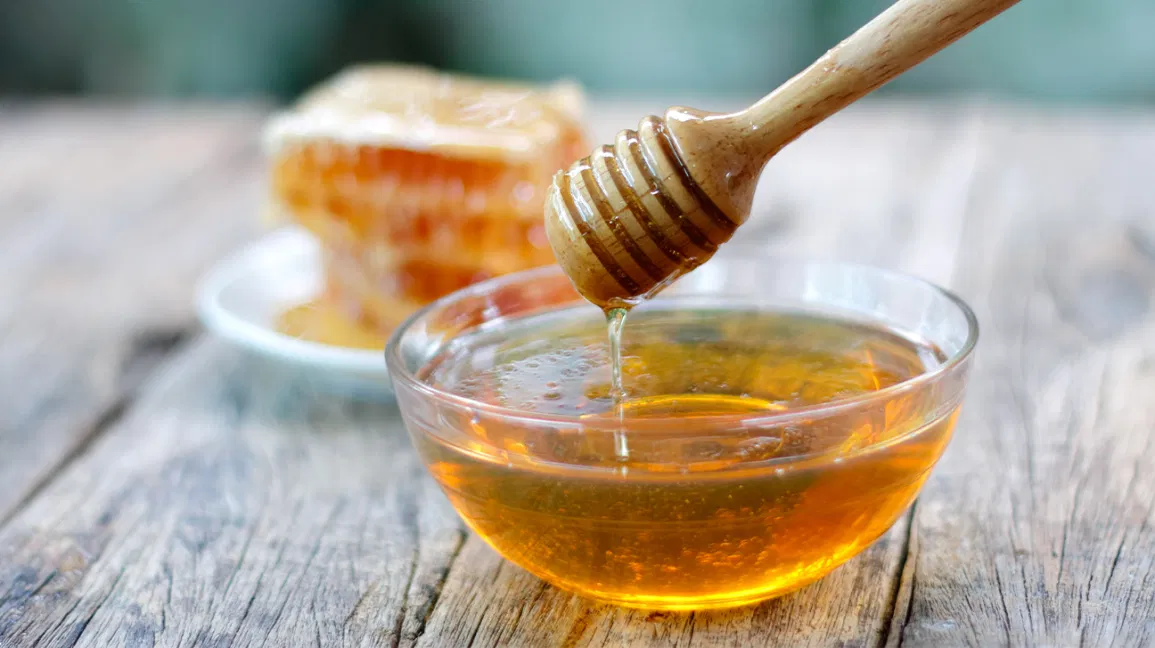ISLAMABAD, Nov 27(ABC): A new analysis from the University of Toronto shows that eating honey may help people manage high cholesterol or blood sugar levels.
Honey’s health benefits are so powerful that its status as an added dietary sugar should perhaps be reconsidered, the researchers concluded.
“The word among public health and nutrition experts has long been that ‘a sugar is a sugar,’” said researcher John Sievenpiper, MD, PhD, in a news release. “These results show that’s not the case, and they should give pause to the designation of honey as a free or added sugar in dietary guidelines.”
Specifically, the researchers found that eating honey is associated with lowered fasting blood glucose, which is a measure of sugar in the blood used to diagnose diabetes. Their analysis also showed it improved heart health measures such as cholesterol and triglyceride levels.
How Do Bees Make Honey?
It begins when a honeybee stops at a flower and sucks out the sweet liquid nectar. They store the nectar in a special sac called a honey crop, where enzymes break it down into simple sugars. Back at the hive, other bees move the nectar into honeycombs. They hover above the cells, creating a breeze that dries out the nectar until it becomes honey, and then seal the cells with wax. Bees visit 2 million flowers to make a pound of honey.
Is Honey Really Bee Barf?
When they’re hunting for nectar, bees do store it in a special second stomach just for honey. And while they do sort of throw it up when they get back to the hive, it isn’t quite the same. The truth is that since the nectar was never in the bee’s actual stomach, it isn’t really vomit.
Where Does Honey Come From?
Most honey comes from farms where bees pollinate crops like berries, vegetables, fruit trees, and nut trees. In 2017, U.S. beekeepers gathered 148 million pounds of honey. The top honey states are North Dakota, California, South Dakota, Florida and Montana. Bees pollinate more than one-third of our crops and increase the value of harvests by at least $15 billion.
How Long Have People Used Honey?
Humans have gathered honey for thousands of years. Rock art in Spain from 6000 B.C. shows people harvesting honey. Beeswax from around 8000 B.C. was found in cooking pots in Turkey. By 2400 B.C., the Egyptians were skilled beekeepers. When early people cleared forests into pastures, they created bee-friendly habitats where flowers and bushes grew. As farmers moved into new areas, honeybees followed.
How Is Honey Used In Brewing?
The oldest known fermented drink was made with honey. Scientists found it preserved in 9,000-year-old pottery jars at a site in Northern China. The recipe also included rice and fruit. Today, brewers use honey to make beer sweet or dry, or to add aroma, flavor, and roundness. Many brewers also make mead, which is fermented only with honey. But mead isn’t beer.
Honey vs. Sugar
In this debate, honey may have an edge. It has healthy antioxidants, amino acids, and vitamins. But some experts say honey’s benefits are too small to matter. Besides, a teaspoon of honey has 21 calories, compared with 16 for sugar. Don’t give honey to children under 1 year of age. It may have trace amounts of botulism that will make them sick.
Will Honey Help My Allergies?
Honey contains pollen, and because of that, some people eat local honey for relief from hay fever and other allergies. The idea is similar to how allergy shots work. But the types of pollen in honey are rarely the types of pollen that make people sneeze or cause their eyes to water. The science is clear: Eating honey won’t help most people with seasonal allergies.
The use of honey to treat wounds and burns has been part of traditional medicine for centuries. Ancient Egyptians used it on wounds. It has natural compounds that fight bacteria, promote healing, prevent infections, and ease swelling. To be safe, buy medical-grade honey from a drugstore before you treat a wound or burn. Always see your doctor if the wound is serious.
How Long Does Honey Keep?
Honey has an amazing shelf life. Scientists found pots of honey in Egyptian tombs that were thousands of years old — and still safe to eat! Its low moisture, strong acids, and antibacterial compounds make it almost impossible to spoil as long as it’s sealed. Keep it in a tightly closed jar in a dry, cool place like a pantry. If it gets crystals, put it in an open, nonplastic container in a pan of warm water until it’s clear again.
What’s Royal Jelly?
Royal jelly is superfood for bees. Every newborn bee eats it for a few days. But bees destined to become queens are fed royal jelly until they’re adults. That’s why queens are bigger and live longer than other bees. Some people say royal jelly is also a superfood for humans and can treat everything from baldness to menopause and arthritis. But claims about royal jelly are more hype than fact.
What Is Manuka Honey?
This dark honey, made from the nectar of manuka trees in New Zealand, is a popular folk remedy for wounds, burns, and ulcers. It has an antibacterial compound that is unique among honeys. That’s why it’s drawn interest from scientists. Recent studies support the use of manuka to heal wounds and skin disease, and to fight deadly bacteria. It also shows promise as a treatment for some cancers.
Can Honey Ease Cold Symptoms?
Your parents were on to something when they gave you honey for a cold. Studies show that a small amount helps children cough less and sleep better, compared with the drugs in many well-known syrups and allergy pills. Just don’t give it to any little ones less than 1 year old. It could cause botulism.

